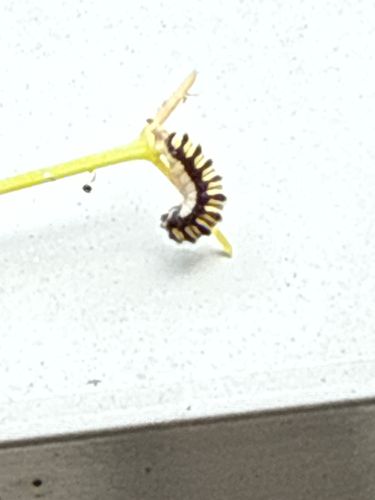Monarch Butterfly Caterpillar
Scientific Name: Danaus plexippus (larva stage)
Order & Family: Lepidoptera, Nymphalidae
Size: Newly hatched caterpillars are tiny, about 2-3 mm, and grow up to 4.5-5 cm (about 2 inches) in length before pupating.

Natural Habitat
Found in open fields, meadows, roadsides, and gardens where milkweed plants grow. Their distribution varies regionally depending on the presence of milkweed and climate, extending across North, Central, and South America, as well as Australia and some oceanic islands.
Diet & Feeding
Monarch caterpillars are obligate specialists; they feed exclusively on milkweed plants (Asclepias species). The chemical compounds (cardiac glycosides) from the milkweed are sequestered by the caterpillar and stored in its body, making both the caterpillar and the adult butterfly toxic to many predators.
Behavior Patterns
Monarch caterpillars go through five instars (growth stages) before pupating. They feed almost continuously, growing rapidly. They are known for their distinct striped coloration, which serves as a warning to predators about their toxicity. When disturbed, they may curl up or regurgitate defensive fluids. Their entire life cycle, from egg to adult butterfly, can take about 30-45 days, depending on temperature and food availability.
Risks & Benefits
Risks: None to humans directly. They can defoliate milkweed plants, but this is a natural part of their lifecycle. Benefits: Monarchs are important pollinators as adult butterflies. Their caterpillars play a crucial role in the food web as a food source for some specialized predators that are tolerant to their toxins, but primarily, they are known for their iconic migration which is a significant biological phenomenon.
Identified on: 9/1/2025